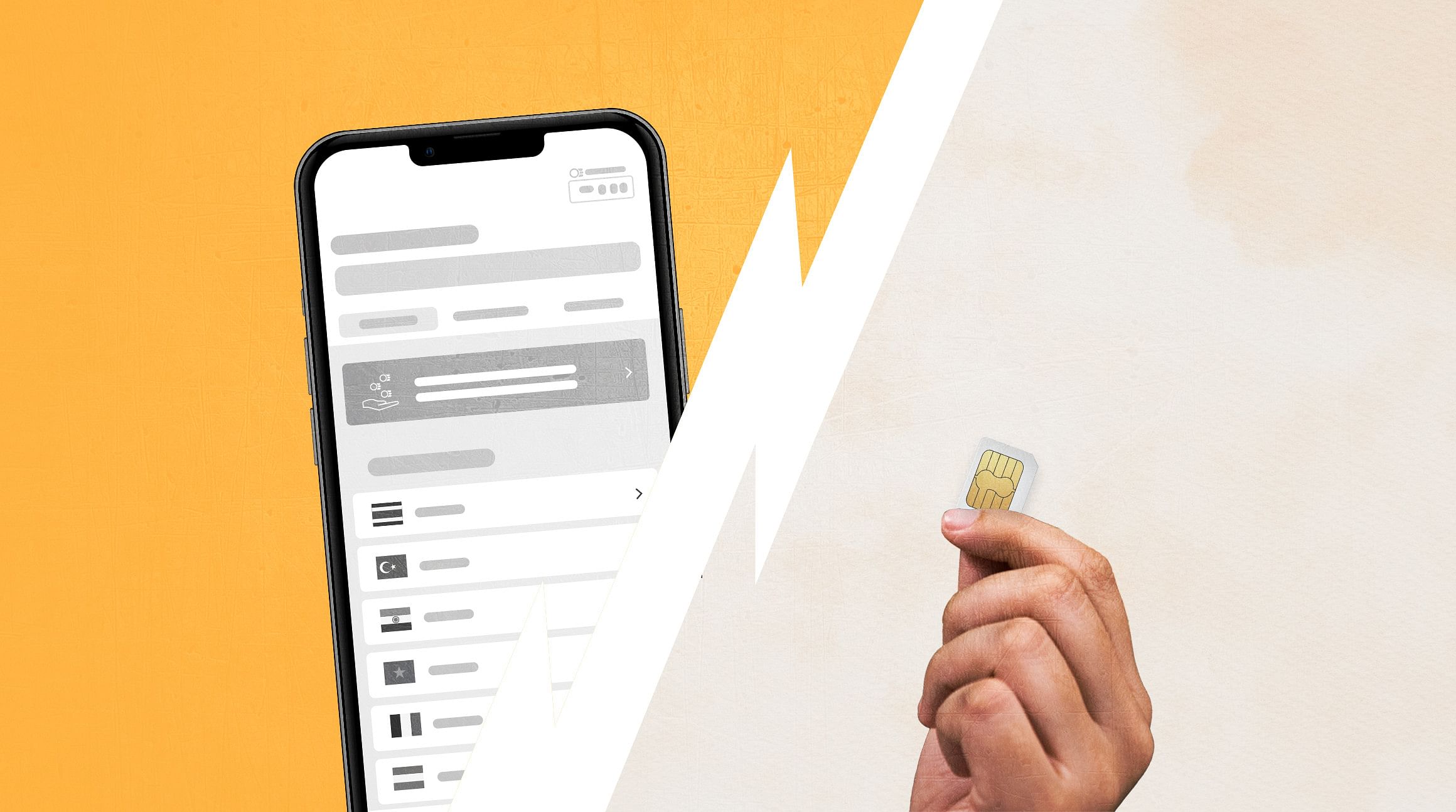
Staying connected while you travel is a smart move, albeit challenging. While you’ve got plenty of options, navigating Wi-Fi, data plans, and daily roaming fees can be tricky. Now, we’re throwing another option into the mix: eSIMs.
An eSIM is a digital SIM embedded in your device, making it easy and affordable to connect instantly, no matter where you are in the world. But why choose an eSIM when you can find nano SIMs anywhere?
That’s where we come in. Read on for a closer look at the difference between eSIMs and nano SIMs and discover which technology is a better fit for you.
The Evolution of the SIM Card
SIM cards have been around for as long as cell phones. The first mobile phones were so big they had credit card-sized SIM cards to match! Since then, they’ve gotten much smaller. Nano SIMs are about 40% smaller than micro SIMs, and eSIMs are teeny — they come in at just 2.5mm x 2.3mm.
Physical SIM cards may have shrunk over time, but their technology has largely stayed the same. A SIM is a memory chip that stores information about you as a mobile user and connects you to a mobile network. A smaller SIM simply means more room for a larger battery or the flexibility to downsize a device.
What is a Nano SIM Card?
Today, nano SIMs are the smallest physical SIM cards on the market. They’re the most widely used SIM and are ubiquitous with smartphones — but they’re probably not the final iteration of SIM cards as we know them.
What is an eSIM?
The eSIM is a new type of SIM technology that eliminates the need for a physical card. Rather than requiring users to fiddle with SIM trays and pins, the eSIM is embedded in your device and digitally connects to a downloaded data plan. While some devices have both a physical SIM card tray and an eSIM, several newer models only carry an eSIM.

eSIM vs. Nano SIM: Similarities
There’s a slight stigma surrounding SIM vs. eSIM in that they’re different technologies, so you can’t accurately compare them. However, most people would be surprised to know that they have quite a few similarities, such as:
- They connect your phone to your mobile provider’s network
- You can use them on many different devices (not just phones)
- They identify your phone and the type of plan it uses
- You can use them simultaneously in a Dual SIM phone
- They’re both technically “SIMs”
Yes, that’s right, both are SIMs. However, a SIM card is a chip that is physically installed or removed inside your phone with your carrier’s plan. An eSIM (embedded SIM) is built into your phone and digitally downloads your carrier’s plan.
eSIM vs. Nano SIM: Which is Better?
Whether you prefer one depends on how you use your device. Here’s a quick rundown of the advantages of each.
Nano SIM Advantages
The first nano SIM cards hit the scene in 2012. In terms of technology, that’s a long time. It also means pretty much every smartphone uses them, and that makes them:
- Easy to find: The nano-SIM is the standard SIM card in most newer devices. If you need a SIM card, you should be able to find one without too much trouble. (The caveat, of course, being scams targeting travelers exist.)
- Easy to transfer to a new phone: If your SIM card and phone are both unlocked, it’s easy to remove and insert your SIM into another phone.
- Easy to get a new number: Some people prefer picking up local SIM cards because they’ll have a local number to make calls and texts.

eSIM Advantages
The beauty of eSIM cards is that they're embedded in your device. You don’t need to remove them to switch carriers, and connecting to data is as simple as downloading a prepaid plan. Here's why you might opt for an eSIM:
- Multiple eSIMs: You can have up to 15-20 eSIMs stored on your phone, making switching between data plans a breeze.
- Keep your number: If you’ve got Dual SIM technology on your phone (a physical SIM card in addition to eSIM), you’ll be able to make phone calls with your regular number. Otherwise, an eSIM data plan will let you make calls using WhatsApp, Telegram, or another popular app.
- Regional plans: Some eSIM data plans support data coverage in multiple countries, which is super convenient if traveling to various destinations.
- You can't lose it: If you lose a physical SIM, you lose service. In contrast, your eSIM data plan is stored on the chip embedded securely in your phone.
Using an eSIM and Nano SIM at the Same Time
You can use an eSIM alone or alongside a nano SIM. When that happens, it’s referred to as Dual SIM technology. Two types of Dual SIM technology exist:
1. Dual SIM Dual Standby
Dual SIM Dual Standby (DSDS) means choosing which SIM makes and receives calls or texts on your phone. Your primary SIM card handles data and calls or texting in most cases. However, when you travel, you might use the data on your eSIM while reserving your physical SIM for the rare instances you need to receive texts or calls, such as in the case of multifactor authentication.
2. Dual SIM Dual Active
Dual SIM Dual Active (DSDA) means both your eSIM and physical SIM can receive calls, send texts, and access data. It’s a nice feature in areas with spotty service because it allows you to switch carriers. DSDA also lets you have two phone numbers (e.g., foreign and local) on the same device. However, this capability depletes your battery faster.
As you can see, there are advantages to using both nano SIMs and eSIMs in your device — it all depends on which technology makes the most sense for you.
Still undecided? Explore 5 ways Airalo customers use eSIMs when they travel.



